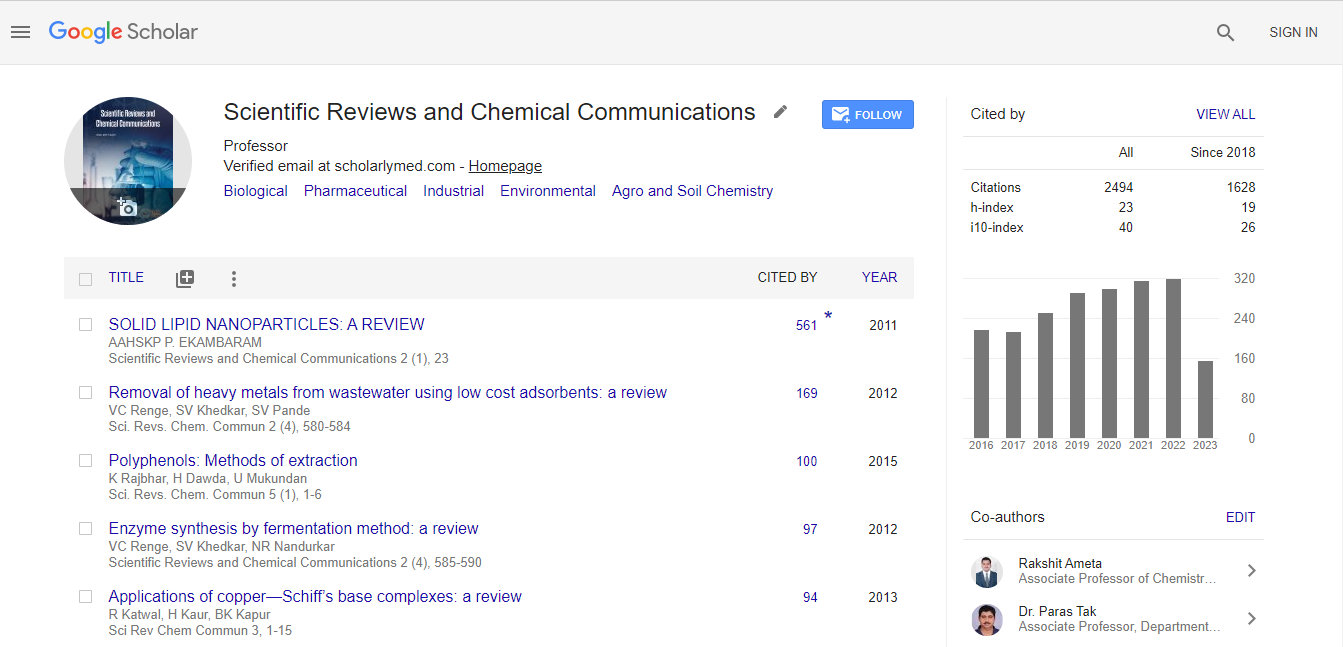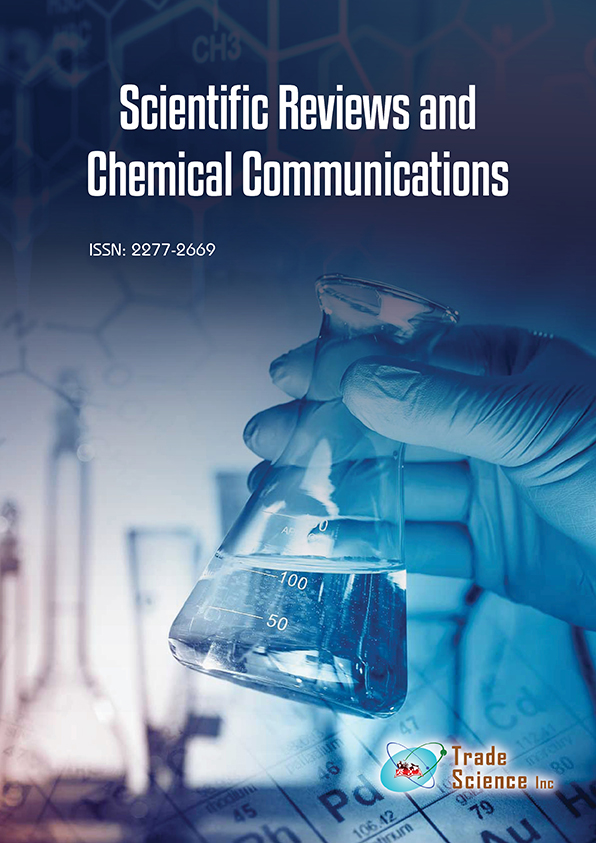Review
, Volume: 12( 3)Chemical differentiation and quantitative analysis of Black Ginseng are conducted using an LC-MS method combined with multivariate statistical analysis
- *Correspondence:
- Irina S. Joseph Associate Professor, Ullswater Avenue, West End Southampton, Hampshire UK, E-mail: chemcommun@scholarlymed.com
Received date: 07-July-2023, Manuscript No. tssrcc-23-108893; Editor assigned: 10-July-2023, PreQC No. tssrcc-23-108893(PQ); Reviewed: 12-July-2023, QC No. tssrcc-23-108893(Q); Revised: 17-July-2023, Manuscript No. tssrcc-23-108893(R); Published: 27-July-2023, DOI. 10.37532/2277-2669.2023.11(3).11-13
Citation: Irina S. Joseph. Chemical Differentiation and Quantitative Analysis of Black Ginseng are Conducted using an LC-MS Method Combined with Multivariate Statistical Analysis. 2023;11(3):11-13
Abstract
Ginseng has long been recognized for its potential health benefits and has been widely used in traditional medicine. Recently, the emergence of Black Ginseng, a processed form of white or red ginseng, has gained significant attention due to its enhanced bioactivity and unique chemical composition. This review article focuses on the application of Liquid Chromatography-Mass Spectrometry (LC-MS) combined with multivariate statistical analysis for the chemical differentiation and quantitative analysis of Black Ginseng. The comprehensive utilization of this analytical approach has shed light on the complex bioactive compounds in Black Ginseng and their potential health implications. In this review, we summarize recent advancements in LC-MS techniques and multivariate statistical analysis used in the study of Black Ginseng, aiming to provide valuable insights into its characterization and potential applications.
Keywords
Black ginseng; Ginsenosides; UPLC-Q-TOF/MS; Processing; Multivariate statistical analysis
Introduction
Throughout the ages, Ginseng has held a crucial role in Asian traditional medicine, celebrated for its diverse medicinal properties. Over time, a remarkable variation known as Black Ginseng has emerged, achieved through the meticulous process of repeatedly steaming and drying the ginseng root [1]. This treatment triggers significant chemical transformations, leading to heightened biological activities and unique therapeutic effects.
To understand and unravel the complex composition of Black Ginseng, scientists and researchers have turned to an analytical powerhouse known as LC-MS (Liquid Chromatography-Mass Spectrometry). This advanced technique has found extensive use in both identifying and quantifying the various active components, particularly ginsenosides, present in Black Ginseng [2]. By harnessing the capabilities of LC-MS, researchers can gain a comprehensive understanding of the chemical profile and the abundance of beneficial compounds within this specialized form of Ginseng.
In this article, we delve into the importance of Black Ginseng and highlight the pivotal role played by LC-MS combined with multivariate statistical analysis. By employing this method, researchers can thoroughly characterize Black Ginseng, unlocking valuable insights into its potential medicinal applications and contributing to our knowledge of this remarkable herbal remedy
Literature Review
LC-MS techniques for black ginseng analysis
This section outlines the principles and methodologies of LC-MS used in the analysis of Black Ginseng. The advancements in chromatographic separation techniques and mass spectrometry detection methods have enabled the identification and quantification of ginsenosides and other biologically active components. Additionally, the extraction and sample preparation techniques are discussed for optimal analysis [3].
Chemical differentiation of black ginseng
The chemical differentiation of Black Ginseng involves identifying and quantifying the complex array of ginsenosides and secondary metabolites present in the processed ginseng. The application of LC-MS in distinguishing Black Ginseng from other ginseng varieties, such as white and red ginseng, is discussed. Multivariate statistical analysis techniques, such as Principal Component Analysis (PCA) and Hierarchical Clustering Analysis (HCA), have been crucial in revealing the unique chemical profile of Black Ginseng.
Quantitative analysis of active components
The NMR studies section provides an overview of how nuclear magnetic resonance is utilized to study mutual solubilities. It discusses different NMR techniques, such as chemical shift titration, diffusion NMR, and relaxation measurements. Chemical shift titration experiments are explained in detail, including how they can be used to determine the concentration of each component in the mixture and quantify solubility parameters [4]. The unique insights provided by diffusion NMR, which can be used to study molecular mobility and diffusion coefficients, are also discussed [5].
Biological activities and health implications
Understanding the chemical composition of Black Ginseng has paved the way for elucidating its pharmacological properties and health implications [6]. This section summarizes the recent research on the potential benefits of Black Ginseng, such as antioxidant, anti-inflammatory, immunomodulatory, and anti-cancer activities. The review also highlights the relationship between the chemical profile and the observed biological activities.
Challenges and future perspectives
The review article concludes by discussing the current challenges and future prospects in the analysis of Black Ginseng using LCMS and multivariate statistical analysis. The potential integration of other advanced analytical techniques and emerging technologies is explored, emphasizing the importance of ongoing research in this field.
Conclusion
In conclusion, through the use of LC-MS and multivariate statistical analysis, the chemical composition and quantitative analysis of Black Ginseng have been thoroughly investigated, shedding light on its distinctive chemical profile and possible health advantages. This comprehensive review significantly advances our knowledge of Black Ginseng's chemical makeup, presenting promising indications of its therapeutic potential in both traditional and contemporary medical practices. As a result, this study serves as a crucial stepping stone, urging researchers to delve deeper into the exploration of Black Ginseng's complete therapeutic properties and its application in various medicinal contexts. By understanding the unique compounds present in Black Ginseng and their potential benefits, this research opens up exciting avenues for further investigation and harnessing its medicinal qualities for the betterment of human health.
References
- Chang-Xiao L, Pei-Gen X. Recent advances on ginseng research in China. J ethnopharmacol. 1992;1;36(1):27-38.
- Grazina L, Amaral JS, Costa J, et al. Towards authentication of Korean ginseng-containing foods: Differentiation of five Panax species by a novel diagnostic tool. LWT. 2021;1;151.
- Chen J, Du B, Cai W, et al. Ginsenosides and amino acids in flavored ginseng chips as affected by food formulation and processing technology. LWT- Food Sci Technol 2015;1;62(1):517-24.
- Zhu L, Luan X, Dou D, Huang L. Comparative analysis of ginsenosides and oligosaccharides in white ginseng (WG), red ginseng (RG) and black ginseng (BG). J chromatogr Sci. 2019;57(5):403-10.
- Sun BS, Gu LJ, Fang ZM, et al. Determination of 11 ginsenosides in black ginseng developed from Panax ginseng by high performance liquid chromatography. Food Sci. Biotechnol. 2009;18(2):561-4.
- Sun BS, Gu LJ, Fang ZM, et al. Simultaneous quantification of 19 ginsenosides in black ginseng developed from Panax ginseng by HPLC?ELSD. J pharm biomed Anal. 2009;50(1):15-22.

